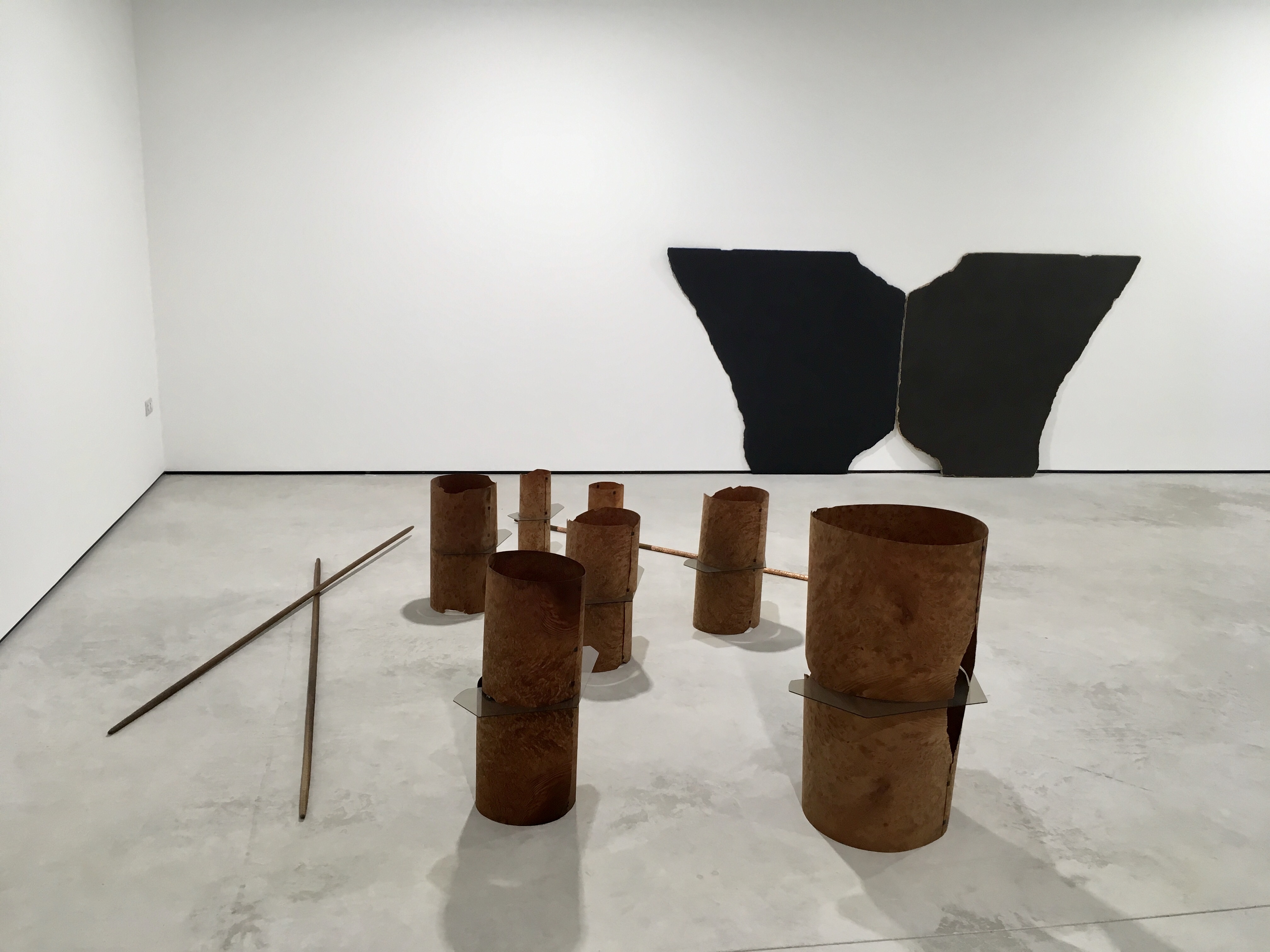
Cross Lane Projects is a new initiative that makes a significant contribution to the cultural life of Kendal and the wider Cumbrian region. Located in a back street just a few short steps from the town’s Abbot Hall Art Gallery, the unpromising exterior of this large former factory building opens into a pristine and airy white walled gallery. Recently opened by the artists Rebecca Scott and Mark Woods, the building also houses their expansive workshop and studios, and they deserve huge credit for creating a contemporary art space for which they have ambitious plans in a region where such venues are few and far between.
Their second exhibition is the only showing outside London for this year’s prestigious Mark Tanner Sculpture Award and is the first of what will be an annual event, bringing the prize from the capital to be shown in the rural north-west of England. This year’s awardee, Frances Richardson, is showing a body of new work investigating the dualities of objects and space, thought and measurement, emotions and intellect, under the title Not even nothing can be free of ghosts.
Entering the gallery, a false wall creates a small area that constitutes a kind of material introduction to the work in the main space. It contains a wall text combining the titles of all the works in the show into a cryptic poem; a large photograph of an ancient standing stone, the image manipulated to render the stone transparent and ghostly; and two small sculptural works on the floor. These are based on an opened-out, creased-up cardboard pizza box that Richardson found abandoned on a London street near her studio and has replicated at 1:1 scale in plywood. The boundaries of the ‘real’, the copy and the constructed fold in on themselves in these literally folded objects. More of them are found in the main space, serving as a kind of punctuation between the larger works. Boxes are a recurring motif throughout Richardson’s previous work and here, with their visually complex but diminutive form, they emphasise the experience of scale in the overall installation in the four-way intersection of body, mind, object and space.
Another found object, this time a piece of painted chipboard, dominates the rear wall of the main gallery. Richardson has created its mirror-image in paper so that the two parts appear together as a pair of large moth-like wings whose capacity for flight is deadened and anchored firmly by its weight to the floor. By contrast, Divider, a large linear sculpture constructed of ash wood branches delicately balanced on a fulcrum formed from folded concrete-impregnated canvas, has a gravity-defying lightness
A short review allows no space for an account of Richardson’s fascinating biography, but she must be the only contemporary artist to have undertaken a lengthy apprenticeship with a Yoruba master-woodcarver in Nigeria after studying fine art at Norwich School of Art, later completing postgraduate study at the RCA. This unique experience is manifest, not in the form or style of the work, but in her sensitivity to materials, her concentrated attention to symbolism and her understanding of the unifying interrelationship of manufacture, nature and philosophy.
Almost all the works here are suffused with references to water, although the only water to be seen is in a gently contemplative video, looped in an endless backward and forward flow. The coloured stones of the stream bed are echoed in the flecks of the compressed foam block that forms a plinth for the monitor. Nearby, standing tubes of rich dark orange madrone wood veneer are sliced through halfway up with angular shapes of perspex, suggesting columns partially submerged beneath the still surface of water.
In This dry feeling will pass, varying lengths of square-cut walnut wood, partially covered with strips of copper tape that catch and reflect the light, are hinged to the wall at varying heights. The complex angles and linear flow of this piece continue the allusion to water in its reference to falling and the material’s relation to copper plumbing, reinforced by the language of the title. The way the form of the work depends on the length of its components suggests a concern with measurement, more explicit in two other works sharing the title If I measure it must exist, and the linear qualities of the work confirm the idea, central to much of Richardson’s approach, that for her sculpture is essentially a process of three-dimensional drawing.
A thought drawing, drawing of a thought is a framed pair of delicate pencil drawings showing continuous chevron shapes, an ancient symbol of water in several cultures, and made up in Richardson’s signature style of tiny plus/minus, positive/negative signs. Although, with its minimal mark-making gestures and pale tone, it is one of the least visually imposing elements of the exhibition, it actually serves as a key to the whole installation, bringing together the subtle and indirect imagery of water with the implicit relationship between the material delineation of space and philosophically measured conceptual thinking that is always to be found throughout Frances Richardson’s reflective and sophisticated sculptural practice.
‘Frances Richardson: Not even nothing can be free of ghosts’ runs until 16 December 2018.
Published 29.11.2018 by Sara Jaspan in Reviews
868 words